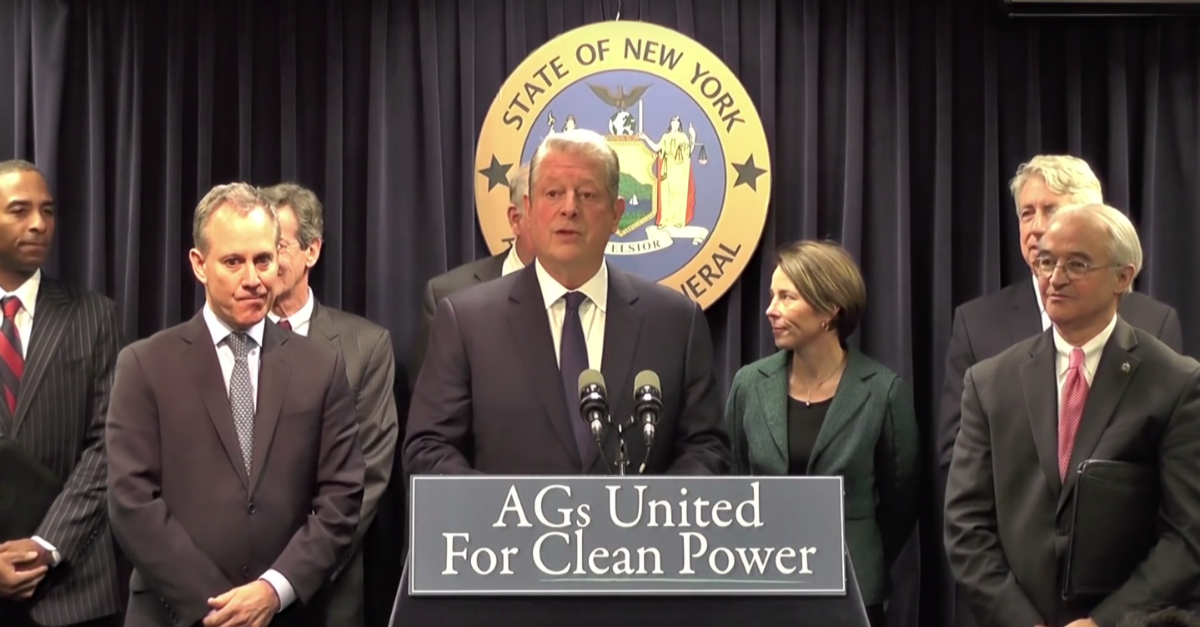Duck if you can, because we’re about to fight another round in the global warming wars.
Videos by Rare
It began last week, when a group of Democratic attorneys general issued a subpoena to the Competitive Enterprise Institute (CEI), a libertarian think tank. The litigious lawyers, as part of their rogue investigation into ExxonMobil, demanded that CEI turn over 10 years of documents related to its public skepticism over manmade climate change.
Conservatives cried foul, and it’s easy to see why—the green menace strikes again, as punitive as ever. Among the attorneys is the notoriously activist Eric Schneiderman of New York, always militant in the cause of himself. Exxon is being probed under laws that were originally intended to fight organized crime. The customary arrogance, the overreach, the chilling of dissent—it’s all there.
But climate change skeptics shouldn’t panic. The ludicrous investigation, which CEI intends to fight, isn’t the latest rout by green activists. It’s better viewed as a Hail Mary, a desperate attempt to prop up a climate consensus that’s falling apart.
The modern green movement hit its apogee in 2006, when Al Gore released his documentary An Inconvenient Truth. The public was eager to focus on something other than the Iraq war, and curious as to whether recent acts of God like Hurricane Katrina could be prevented by man. Gore, the eloquent wonk in earth tones, provided a welcome contrast to the increasingly unpopular George W. Bush. In 2007, the new Democratic Congress passed an expansive energy bill that, among other things, banned the incandescent light bulb.
It was all downhill from there. In 2009, legislation that would have limited industry emissions—nicknamed “cap-and-trade”—was buried in the Senate, even though Democrats controlled both houses of Congress and the presidency. Opponents touted President Obama’s own admission that cap-and-trade would cause power bills to “skyrocket,” a poison pill during an economic downturn.
It was the recession of 2008 that wounded the green movement, perhaps mortally. It proved that environmentalism was a luxury item, something that’s attractive when times are good but suddenly falls from style when wallets run empty. By 2014, public concern over the quality of the environment had hit its lowest level since Gallup started measuring in 2001. In May 2015, the public ranked climate change dead last on a list of 15 national problems, according to Gallup. Asked for the most important problem facing the U.S., the state of our government came in first with 16 percent. The environment only garnered 2 percent.
This has translated into a major public policy setback for environmentalists. President Obama’s greatest failure wasn’t Libya, as he suggested earlier this week, or Obamacare, as many conservatives believe. It was his attempt early in his presidency to rebuild the economy into something more environmentally friendly.
To that end, he tried to ram through cap-and-trade, and stuffed the stimulus package with wads of money for green projects. Cash was offered for clunkers and chirpy statements were issued about weatherstripping. In his position as green jobs czar, Van Jones tried to implement a sort of blue-green alliance, under which organized labor and environmentalists, sometimes at odds, would spend their days whistling merrily while they hammered solar panels to split-level houses.
It never came to pass. Instead, a fracking revolution quietly began, and by the time the Obama administration noticed, its green ambitions had been eclipsed. Today, America is the world’s number-one producer of oil and natural gas. This has plunged the price of gasoline and roiled petro-states from Venezuela to Russia to Saudi Arabia. Natural gas is responsible for a third of all electricity generation in the United States, the same proportion as coal. Renewables only account for 13 percent, and of that, 6 percent is from relatively unsubsidized hydropower. Those solar panels Obama fantasized about? They produce a piddling 0.6 percent of our electricity.
Meanwhile, the solutions still don’t match the hysterical rhetoric and the models continue to prove wrong. The annual number of Atlantic hurricanes—once a supposed omen of climate doom—has fallen from a high of 15 in 2005 to only six in 2015. Van Jones spends his days chatting about presidential politics on CNN. Low gas prices have popularized SUVs once again.
So don’t be fooled by the attack on the Competitive Enterprise Institute. It seems like a sinister legal coup. More likely, it’s all the climate change alarmists have left.



